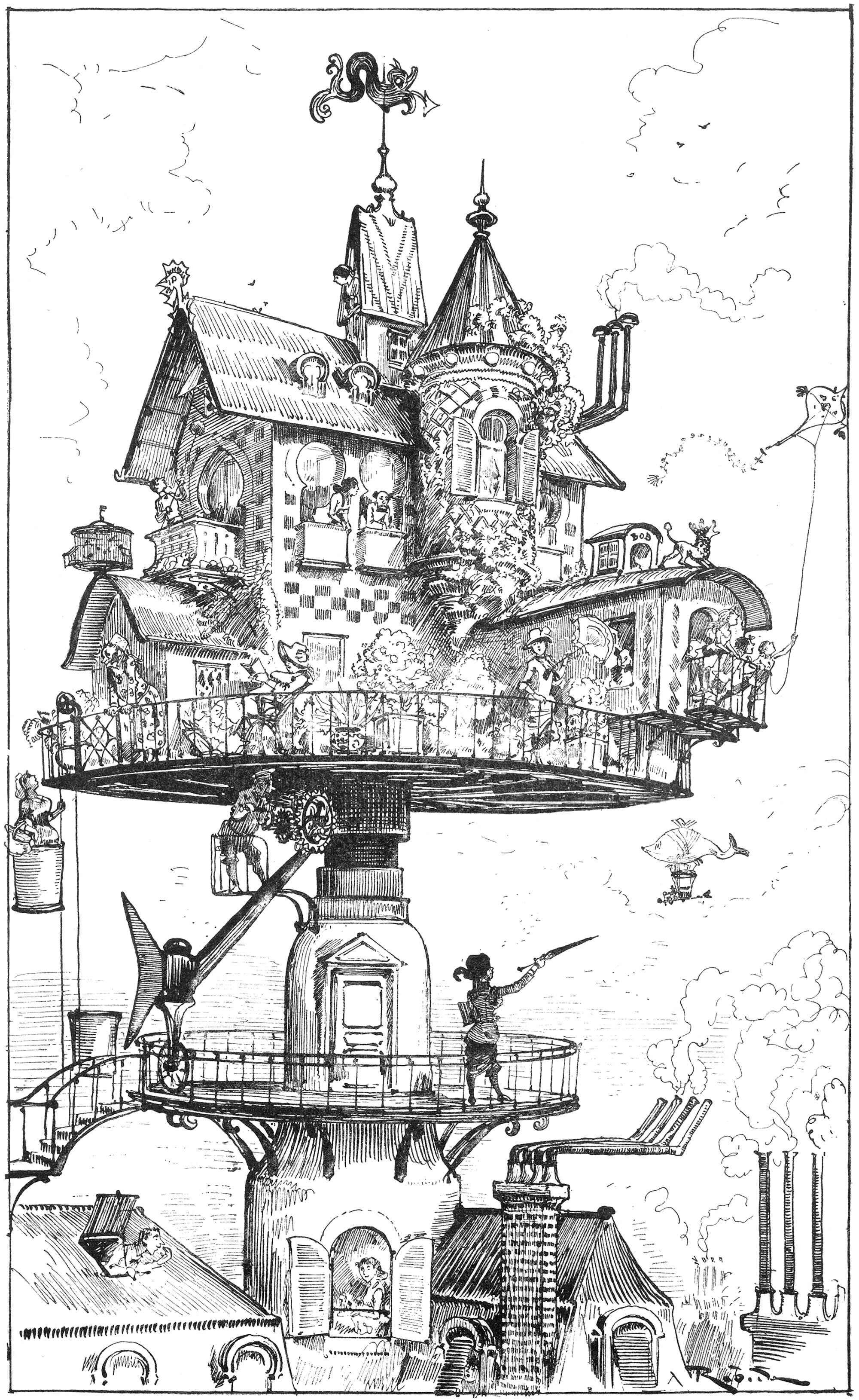Albert Robida’s Aerial Rotating House
Illustration from Albert Robida’s science fiction novel Le Vingtième Siècle, or The Twentieth Century, from 1883. Robida shows an aerial rotating house, built on a large turntable.
The above illustration was drawn by Albert Robida for his 1883 novel Le Vingtième Siècle, or The Twentieth Century. The novel describes a future vision for Paris in the 1950’s, focusing on technological advancements and how they would affect the daily lives of Parisians. Here he shows a house that’s been raised up on a rotating table. It’s a quirky image, but it also makes a statement on overcrowding and access to light and air for urban residents.
In an urban environment, height is the main currency for access to light and air; thus, the taller a building is, the more light and air it will receive. Robida takes this concept and applies it to a single-family home, which rises above the surrounding buildings to occupy the highest place around. Also, by having the house rotate, it enjoys 360-degree views of its surroundings.
This access to fresh air was important at the time, and the idea is emphasized by the factories Robida shows in the background. The myriad smokestacks billow out smoke and pollution, which lowers the air quality in the city. The house is trying to escape this by rising above it all. It’s a statement on the over-crowding and poor air quality of Paris at the time, but Robida uses a whimsical drawing style that somehow provides a sense of optimism. It seems like he was acknowledging a harsh reality while also projecting a positive outlook on the future.
Check out other cartoons dealing with verticality here.

